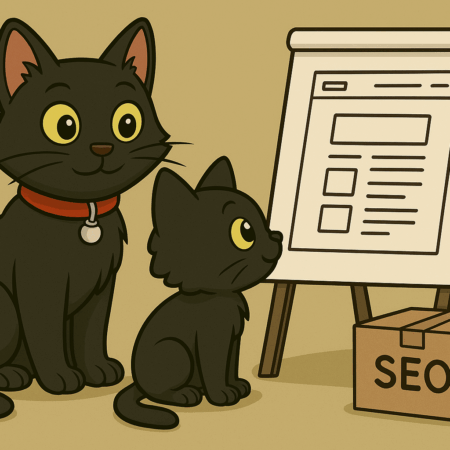A well-designed Competitor Map can reveal far more than market positions. When applied to advertising analysis, it becomes a powerful visual tool for understanding why certain campaigns resonate — and why others fall flat. By plotting adverts along two key axes, you can uncover patterns, spot missed opportunities, and shape your own strategy for maximum impact.
In this article, we’ll explore how to map adverts using two contrasting approaches:
- “Us” vs. “Them” – who is the focus of the message?
- Facts vs. Emotions – what is the driving force behind the appeal?
The Basics of the Competitor Map
So, the first question, “What is a Competitor Map?” A Competitor Map is essentially a two-axis chart divided into four quadrants, or quarters, or squares if you prefer. Each axis represents a variable you want to compare, and each plotted point represents an item.
You can use the concept for looking at pretty much anything for comparisons, but, in this case, we are looking at the effectiveness of adverts.
We look at the factors we are analysing, and score each one along each line, adding a simple dot on the sheet, or, if you want to remember and repeat the process, you could write a name, or anything to remind you who is where.
The visual format makes it easy to see clusters, gaps, and outliers, helping marketers identify both competitive threats and creative opportunities.
Generally, we will see groups clusters together, and, as a business, our goal is to stand out, and the best way of standing out is to break away from the crowd, and so we look for the gaps to see where we can pitch ourselves better.
Now, let us put it into practice.
It is important that each advert (in our case) only has one dot, or point, or whatever you have decided to use, and we find WHERE we are going to put the dot by finding their position on BOTH axis before we plot.
Axis One: “Us” vs. “Them”
On the horizontal axis, we plot whether an advert’s message focuses on “us” (the brand, its features, and what makes it great) or “them” (the customer, their needs, aspirations, and challenges).
- Us-focused adverts often highlight achievements, awards, product features, or company history, all about “US”.
- Them-focused adverts centre on the audience, using language and imagery that puts their desires and pain points first.
Why it matters: In most markets, customer-centric messaging performs better. “Them” is not only more relatable but also creates a sense of personal connection — vital for brand loyalty.
Axis Two: Facts vs. Emotions
On the vertical axis, we plot whether an advert appeals primarily through facts or emotions.
- Fact-led adverts rely on data, specifications, statistics, or measurable claims.
- Emotion-led adverts aim to evoke feelings — humour, nostalgia, excitement, security, or even fear — to create a bond with the viewer.
Why it matters: Emotional triggers often have more staying power in memory. People may forget the details, but they remember how an advert made them feel. This is why campaigns that appeal to emotions often outperform purely fact-based ones, even if the factual offer is strong.

Reading the Quadrants
Once plotted, the map creates four distinct zones:
- Us + Facts – Brand-led, evidence-based adverts (e.g., “We’ve been number one for 20 years!”).
- Us + Emotions – Brand-led, feeling-focused adverts (e.g., heritage stories, corporate pride).
- Them + Facts – Customer-focused, evidence-based adverts (e.g., showing real-life benefits with statistics).
- Them + Emotions – Customer-focused, emotion-led adverts (often the most powerful quadrant).
Why the “Them + Emotions” Quadrant Often Wins
This quadrant blends empathy with emotional resonance. Instead of saying “We’re great because…”, these adverts say “You’ll feel better because…”. By addressing the customer’s needs and tapping into their feelings, they forge a stronger connection and a higher likelihood of engagement.
This is generally the best place to be.
Classic examples include public safety campaigns that tell a personal story, or retail adverts that focus on the joy of the experience rather than the product specs.
Practical Steps to Use This in Training
- Collect a sample of adverts – print, online, or video.
- Define the axes – here, “Us vs. Them” and “Facts vs. Emotions.”
- Plot each advert – position it according to its dominant style and message.
- Analyse patterns – see where the majority fall, identify the empty quadrants, and discuss why.
- Challenge participants – create a campaign that shifts an advert from one quadrant to another and predict how it might perform differently.
This is Your Most Valuable Tool Ever (maybe)
The Competitor Map is more than a theoretical tool — it’s a practical way to decode any metrics you need to compare, and where most businesses sit, and the opportunities to stand out. In this case, looking at advertising strategies, we can hopefully find the sweet spot for your own campaigns. While facts can persuade, it’s often emotions that truly captivate and convert. And while brand pride has its place, focusing on “them” rather than “us” can turn a good advert into a great one.













